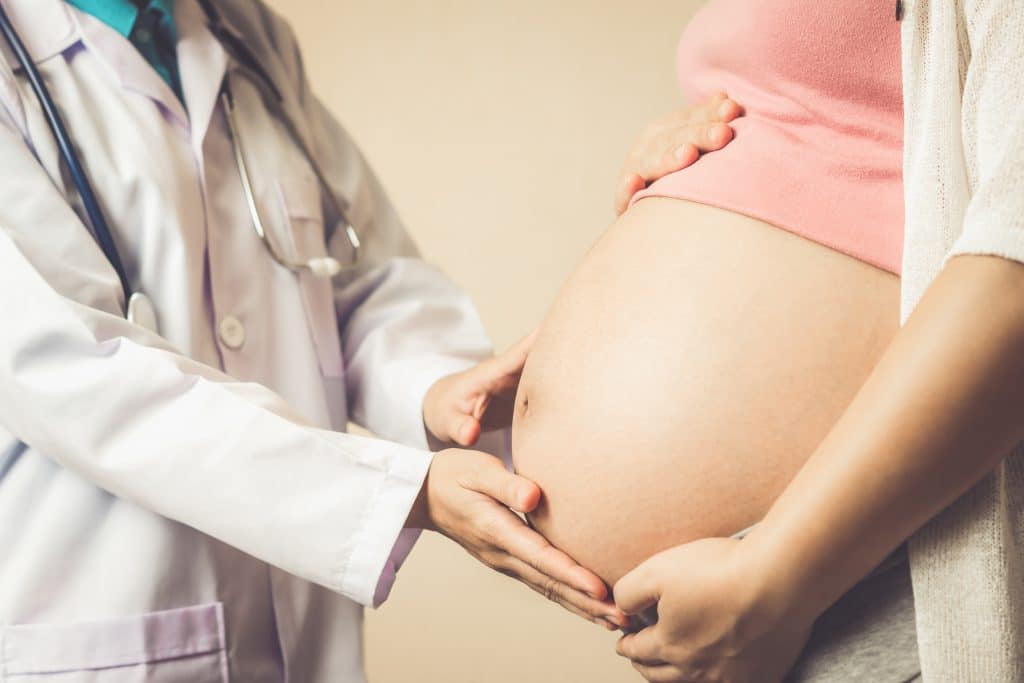Iron and Vitamin C
Essential for healthy blood, iron is a vital nutrient during pregnancy. It has a key role in transporting oxygen to your baby and contributes to their healthy brain development. Read about the warning signs of iron deficiency, the best ways to add iron to your diet and why it’s beneficial to include vitamin C and iron in the same meal.
Iron is a key nutrient during pregnancy – your blood cells need iron in order to transport extra oxygen around and your baby needs it for their developing brain. If you’re running low on iron you could develop anaemia which will leave you feeling tired, washed-out, short of breath and generally unwell.
When you have your first antenatal appointments, you’ll be routinely tested for anaemia. This will be done by analysing both the haemoglobin levels and the number of red blood cells in your blood. While it’s common for your haemoglobin levels to be lower during pregnancy, you’ll only be prescribed iron supplements if they are very low.
For most pregnant women, including lots of iron-rich foods in your diet such as red meat, fish, eggs, dried fruit, wholegrain breakfast cereals and breads, and green leafy vegetables should keep your iron levels where they need to be.
Good sources of iron
- Lean meat (make sure it’s well cooked) and oily fish, like sardines
- Leafy vegetables such as spinach
- Dark green vegetables such as broccoli, watercress.
- Nuts, especially cashew nuts
- Beans and pulses such as chick-peas and lentils
- Wholegrains such as wholemeal bread, brown rice and iron-fortified breakfast cereals
- Dried fruits like apricots, prunes and raisins
- Eggs
Vitamin C helps your body to absorb iron
Whether you’re taking it in pill form or tucking into a steak, iron is best absorbed if ingested alongside vitamin C, so wash down your iron-rich meal or supplement with a fresh glass of fruit juice with no added sugar, or eat fresh fruit with or after your meal.
However, you should avoid drinking tea or coffee within an hour of your meal as they actually reduce iron absorption.
- British Nutrition Foundation. Nutrition and development, short and long-term consequences for health. London: Wiley Blackwell, 2013.
- Vanhees K et al. You are what you eat, and so are your children: the impact of micronutrients on the epigenetic programming of offspring. Cell Mol Life Sci 2014;71(2):271- 285.
- NHS UK. Vitamin A [Online]. 2012. Available at: www.nhs.uk/Conditions/vitamins-minerals/Pages/Vitamin-A.aspx[Accessed April 2019]
- Azaïs-Braesco V, Pascal G. Vitamin A in pregnancy: requirements and safety limits. Am J Clin Nutr 2000;71(Suppl 5):S1325-1333.
- Boyera N. and al. Effect of vitamin C and its derivatives on collagen synthesis and cross‐linking by normal human fibroblasts. Int J Cosmet Sci. 1998 Jun;20(3):151-8. doi: 10.1046/j.1467-2494.
- NHS UK. Vitamins and nutrition in pregnancy [Online]. 2013. Available at: www.nhs.uk/conditions/pregnancy-and-baby/pages/vitamins-minerals-supplements-pregnant.aspx[Accessed April 2019]
- Walker VP1, Modlin RL. The vitamin D connection to pediatric infections and immune function. Pediatr Res. 2009 May;65(5 Pt 2):106R-113R.
- Van Uitert EM et al. Influence of maternal folate status on human fetal growth parameters. Mol Nutr Food Res 2013;57(4):582-595.
- Bath SC, Rayman MP. Is iodine deficiency during pregnancy a public health concern in the UK? Nutr Bulletin 2013;38(4):400-404.
- Morales E et al. Maternal vitamin D status in pregnancy and risk of lower respiratory tract infections, wheezing, and asthma in offspring. Epidemiol 2012;23(1):64-71.
- Scholl TO. Maternal iron status: relation to fetal growth, length of gestation, and iron endowment of the neonate. Nutrition Reviews 2011;69(Suppl): S 23 – S 29.
- Abbaspour, Hurrell, and Kelishadi, Review on iron and its importance for human health, 2014 Feb; 19(2): 164–174. 24778671
- Kris-Etherton PM, Harris WS, Appel LJ; AHA Nutrition Committee. Omega-3 fatty acids and cardiovascular disease: new recommendations from the American Heart Association. Arterioscler Thromb Vasc Biol. 2003 Feb 1;23(2):151-2.
- Richardson AJ. Long-Chain Polyunsaturated Fatty Acids in Childhood Developmental and Psychiatric Disorders. Lipids 2004;39:1215–1222.
Further Reading
Your new baby is the centre of your world, but they’ll need you to stay strong and healthy, physically and emotionally, in order to look after them.
It’s natural to feel nervous about giving birth, especially if it’s your first time.





